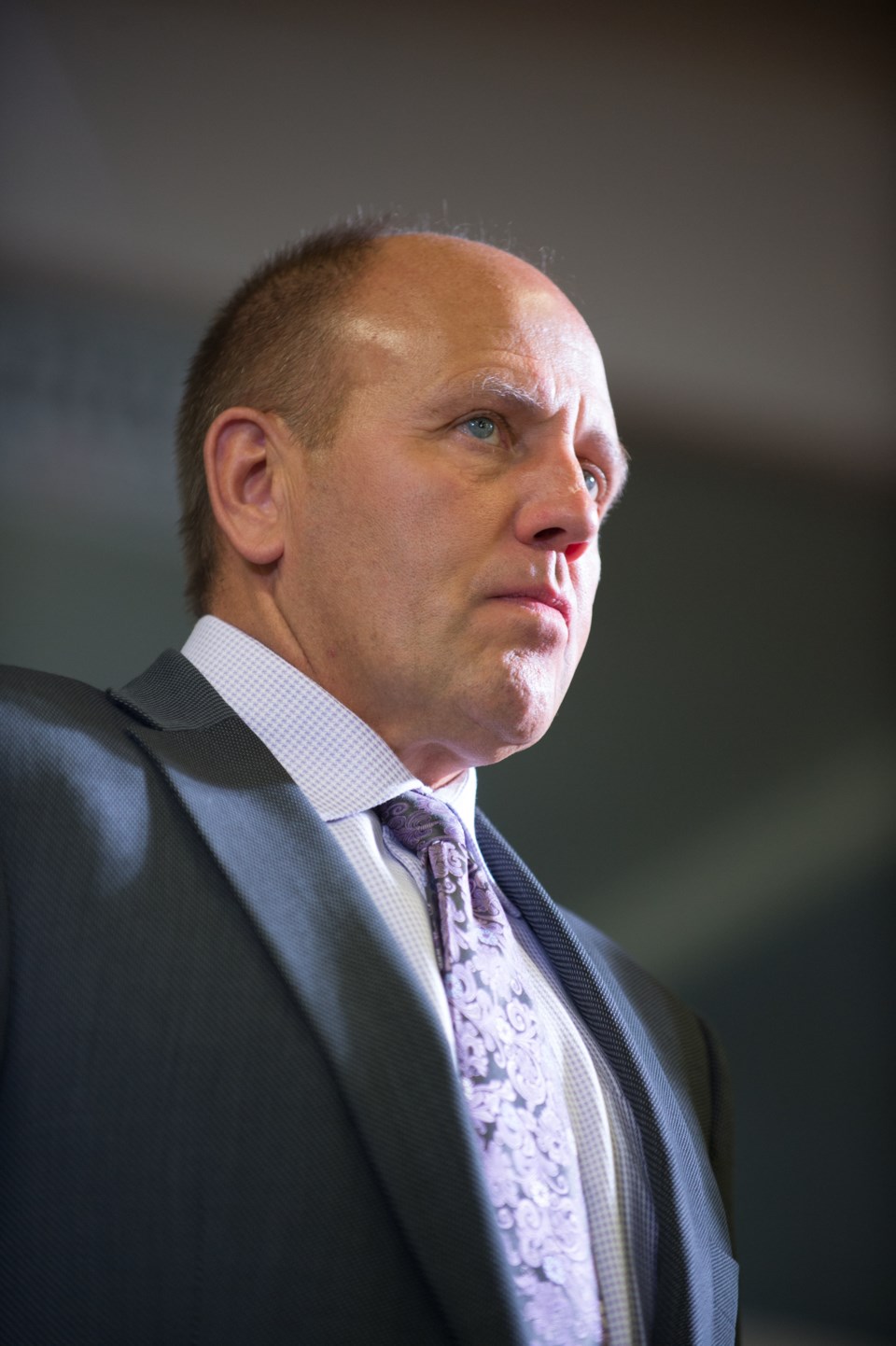Weyburn – Grant Fagerheim, originally from Estevan, is now the president, CEO and chair of Whitecap Resources Ltd., was one of the people inducted into the Saskatchewan Oil Patch Hall of Fame on June 7 at the Saskatchewan Oil and Gas Show. Before the induction, he took a few minutes to speak with Pipeline News.
Whitecap picked up a substantial amount of property from Husky in southwest Saskatchewan last year, part of a broad dispersal of Husky’s non-oilsands, non-heavy oil property.
“One of the assets we acquired was from Husky, in southwest Saskatchewan, close to Swift Current. It was expanding our footprint in Saskatchewan. Typically we’ve been in the Kindersley area. We jumped into the play in southwest Saskatchewan. We think this is a very good area for long term profitability. In Saskatchewan, we think the energy space still has lots of legs on it.
“We produce between 57,000 and 60,000 barrels per day. Our production base in Saskatchewan is about 20,000 to 25,000 of that, about 35 to 40 per cent.”
In the southwest the formations they target include the Atlas and Cantaur sand, as well as the Upper Shaunavon. “In the Kerrobert area, we’re playing in the Viking,” he said.
The Kerrobert area has both heavy and light oil. He noted that the differential has come in a bit for heavy oil, but added, “We are principally a light oil producer.”
The company has not historically been in southeast Saskatchewan. “We don’t have a technical team that is developed in that area. We’ve been really more focused on the western side of the province. But that footprint can always change. It depends upon the economic evaluations that we see on a go-forward basis, because we do apply a lot of capital. For example, our drilling capital this year is just over $300 million,” Fagerheim said.
The company usually runs five to seven rigs across Western Canada, of which, three are typically in Saskatchewan. Two of those are in the Viking play, and one in southwest Saskatchewan.
Asked about the differential in government between Alberta and Saskatchewan, and if Saskatchewan is a better place to put your money right now, he said, “Saskatchewan has been a preferred place. We think the leadership team, with Premier Brad Wall and his team, are much more friendly, fossil fuel friendly. We’re trying to help our economy for all Canadians. So we find Saskatchewan very favourable and we want to continue to have it being exploited.”
Will any of Whitecap’s oil end up in the proposed pipeline projects?
“Not in Keystone XL,” he said. “All oil will make its way to the best markets possible. Ours will preferentially make its way to the West Coast, down Trans Mountain.
“We need all pipelines to take our product. We hear a lot of to tidewater. It’s not just to tidewater. We need to get to foreign markets, however we get there. If we get there through the United States of America, or we get there through getting to tidewater. We think, at this particular time, Canadians are being penalized by not being able to develop the resource in a healthy and economic manner.”
They’re not using the existing Trans Mountain line. “We’re railing. We rail a portion of our product down to Cherry Point, in Washington. It’s a BP refinery.”
It’s Alberta product that goes on rail. All their Saskatchewan product flows on Enbridge lines. They used crude-by-rail for a short period of time for Saskatchewan product, when the differentials were superior. “We haven’t, for the last year and a half,” Fagerheim said.
There are now substantial, but disused, crude-by-rail facilities near Kindersley and Kerrobert. Asked if the differentials picked up again, would they use them, he said, “Correct. For sure, we would.”



